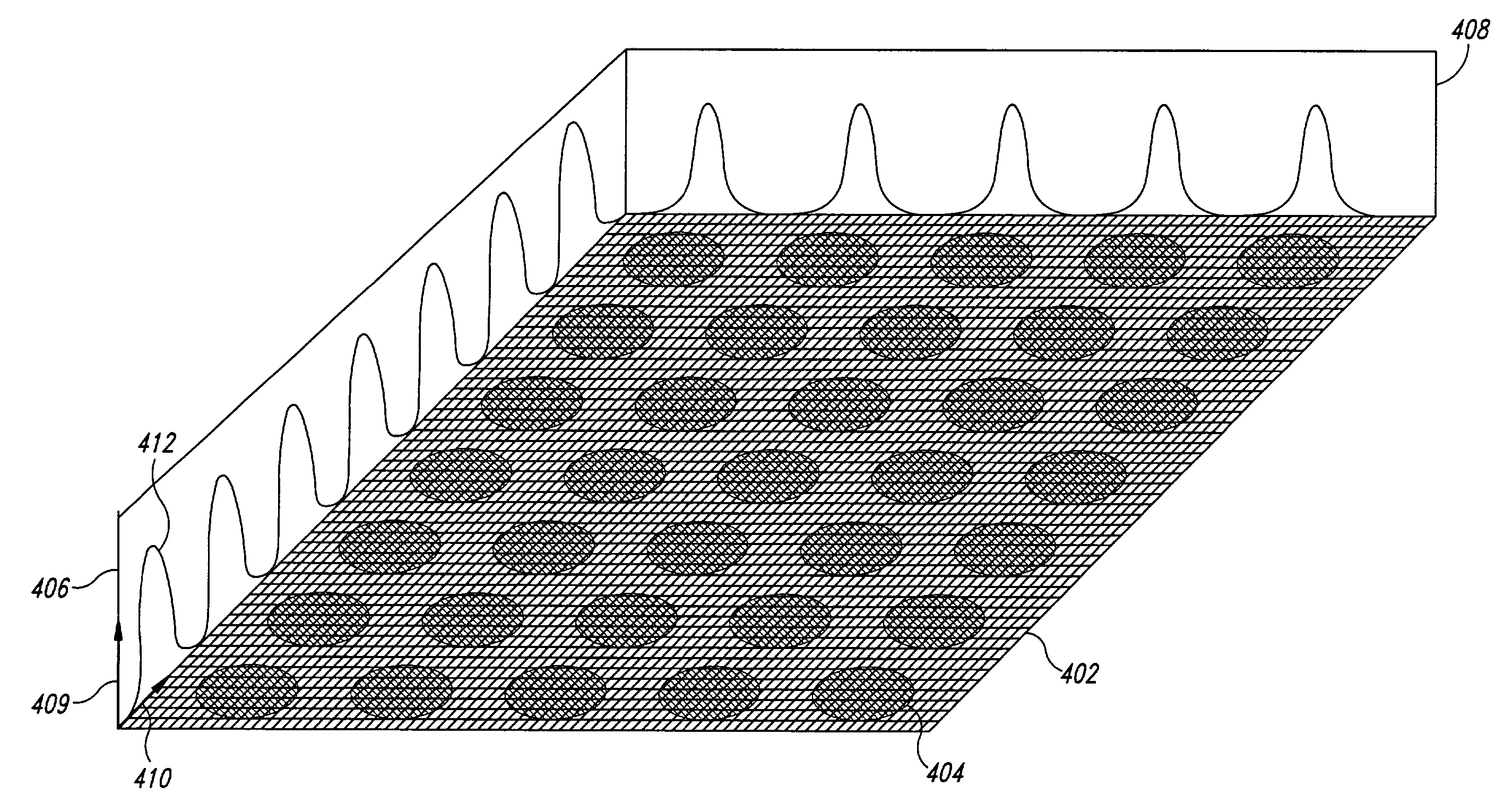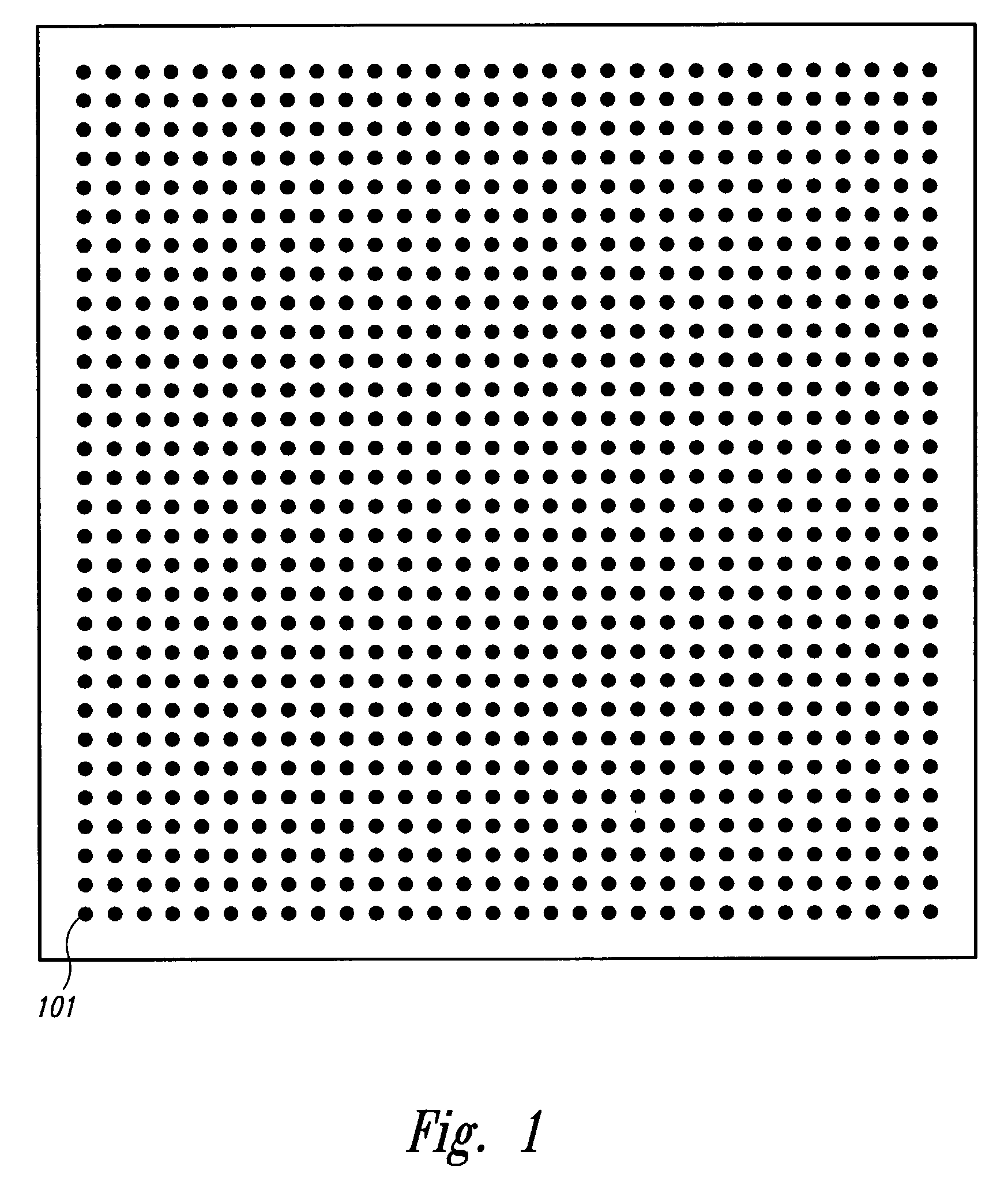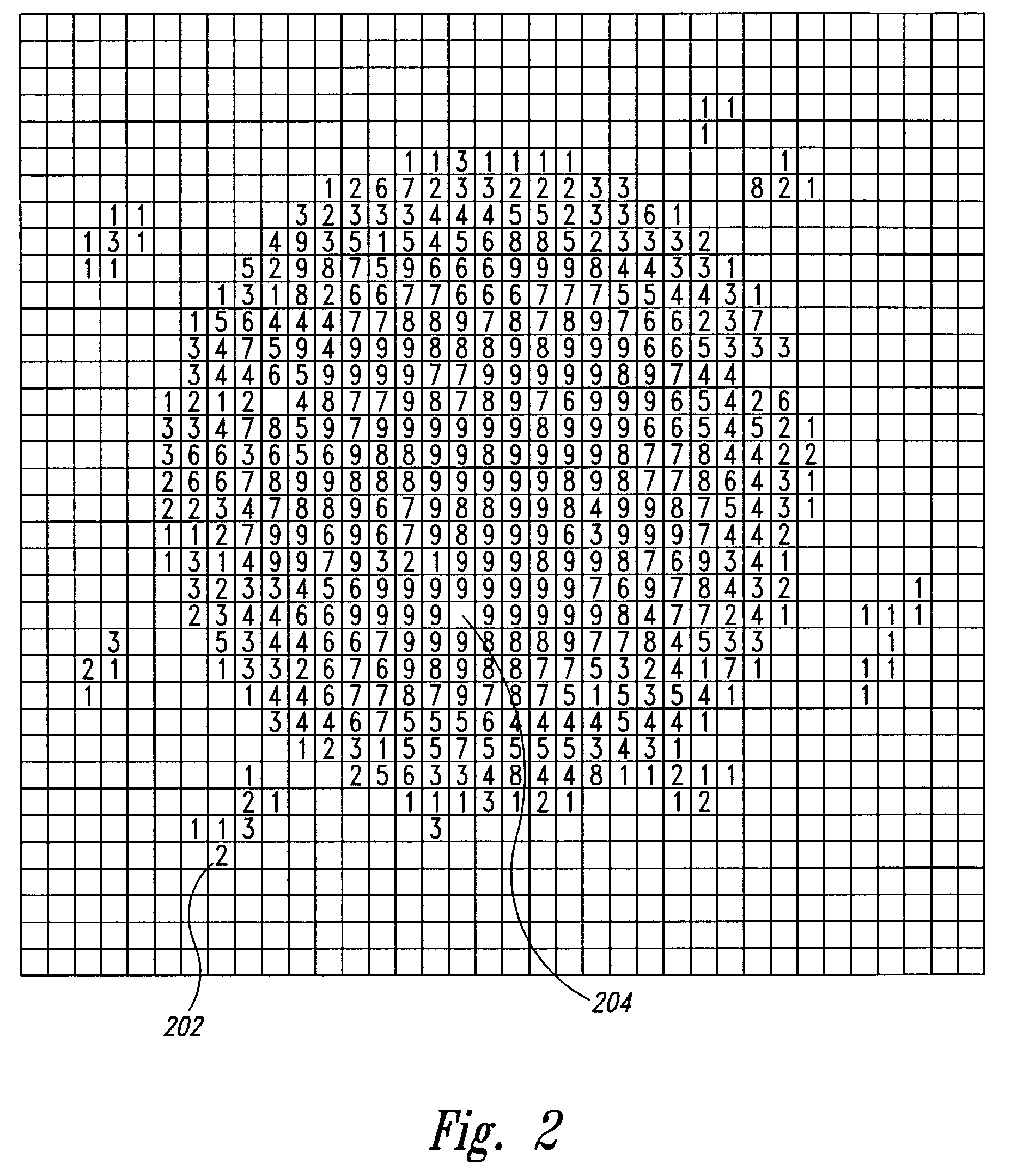Method and system for extracting data from surface array deposited features
a technology of surface arrays and features, applied in the field of molecular array or biochip analysis, can solve the problems of large deviation, noise and variation in scanned images of molecular array features, and achieve the effect of facilitating this process and high signal-to-noise ratio
- Summary
- Abstract
- Description
- Claims
- Application Information
AI Technical Summary
Benefits of technology
Problems solved by technology
Method used
Image
Examples
Embodiment Construction
[0049]The present invention is directed toward automated feature extraction from scanned images of molecular arrays. Automated feature extraction includes: (1) a determination of the approximate positions of the features, for example by determining the positions of corner features within the scanned image; (2) generation of an initial coordinate system for the scanned image, for example, by using the positions of corner features, or by alternative means, including using mechanically precise positioning of features on the molecular array and of the molecular on the detection device and by using fiducial reference marks incorporated in the molecular array and detected independently, but in spatial alignment with detection of chemical features, and refinement of the initial coordinate system to produce a refined coordinate system; (3) determination of reliable regions of the scanned image from which to extract signal data; (4) and extraction of signal data from the features and local b...
PUM
 Login to View More
Login to View More Abstract
Description
Claims
Application Information
 Login to View More
Login to View More - R&D
- Intellectual Property
- Life Sciences
- Materials
- Tech Scout
- Unparalleled Data Quality
- Higher Quality Content
- 60% Fewer Hallucinations
Browse by: Latest US Patents, China's latest patents, Technical Efficacy Thesaurus, Application Domain, Technology Topic, Popular Technical Reports.
© 2025 PatSnap. All rights reserved.Legal|Privacy policy|Modern Slavery Act Transparency Statement|Sitemap|About US| Contact US: help@patsnap.com



